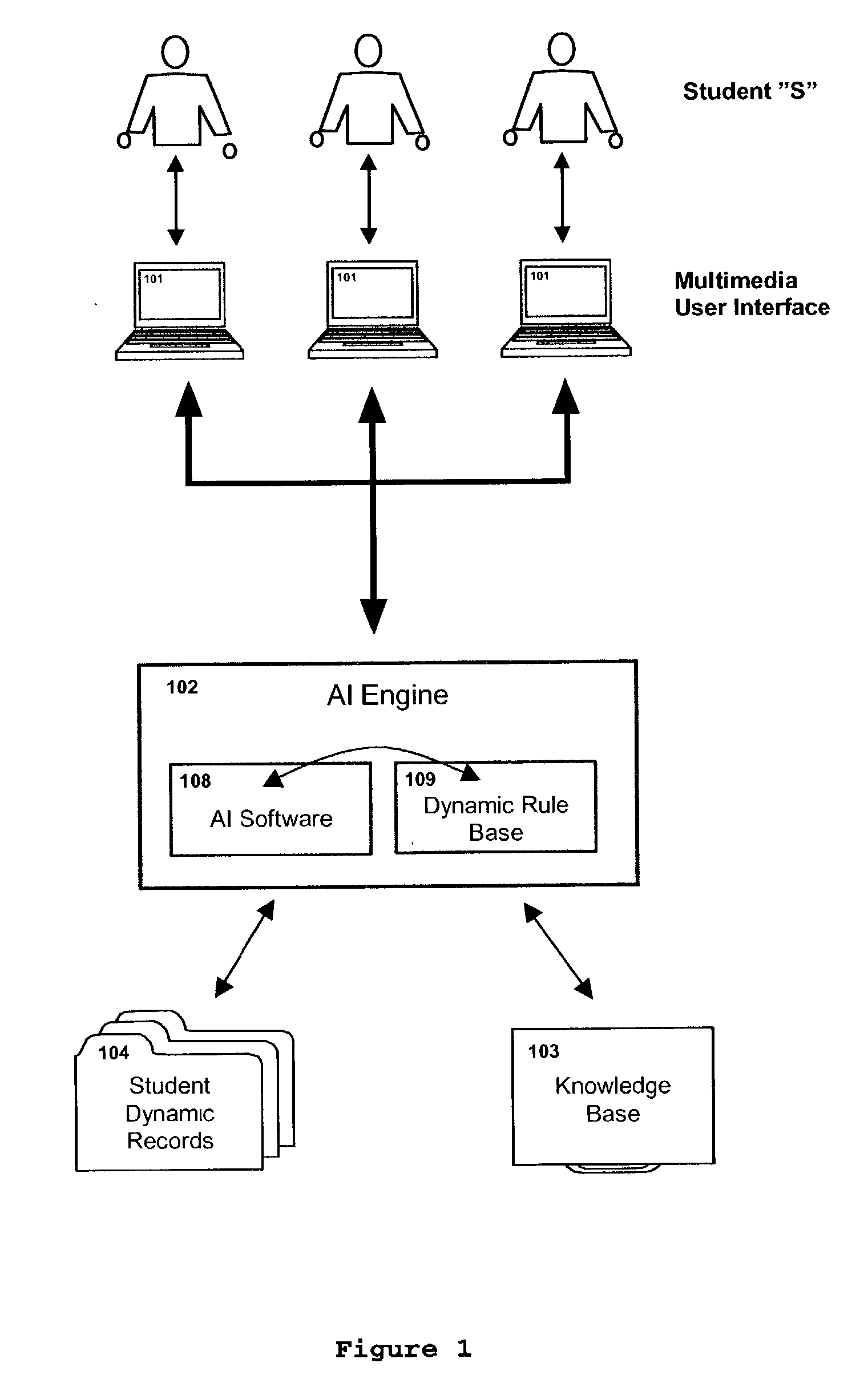Effective and efficient learning (EEL) system
a learning system and effective and efficient technology, applied in the field of effective and efficient learning system, can solve the problems of not being able to tailor the information to the individual needs of the students, and not being able to adequately copy down the information conveyed by the instructors, so as to achieve effective and efficient learning, build knowledge and skills, and obtain long-term memory of knowledge.
- Summary
- Abstract
- Description
- Claims
- Application Information
AI Technical Summary
Benefits of technology
Problems solved by technology
Method used
Image
Examples
Embodiment Construction
[0029] Section 5.1 presents a general overview of the EEL system. Section 5.2 describes the preferred hardware and operating software configurations. Section 5.3 describes details of the interface between the elements of EEL system.
[0030] 5.1. EEL System Overview
[0031] This invention has particular utility in making education and training available at school, at the office, at home, at schools with geographically dispersed students and to students at geographically dispersed schools, and at other types of locations. Further, it will be apparent that this invention may be most useful for memorizing language, terminology, rules and principals, etc. A designated device contains EEL system maybe used to help student learn a particular area, such as vocabulary or grammar. For example, with voice-control, such device can be carried by the student when walking, running or conducting other activities for language learning.
[0032] FIG. 1 illustrates the principal actors and the principal func...
PUM
 Login to View More
Login to View More Abstract
Description
Claims
Application Information
 Login to View More
Login to View More - R&D
- Intellectual Property
- Life Sciences
- Materials
- Tech Scout
- Unparalleled Data Quality
- Higher Quality Content
- 60% Fewer Hallucinations
Browse by: Latest US Patents, China's latest patents, Technical Efficacy Thesaurus, Application Domain, Technology Topic, Popular Technical Reports.
© 2025 PatSnap. All rights reserved.Legal|Privacy policy|Modern Slavery Act Transparency Statement|Sitemap|About US| Contact US: help@patsnap.com



